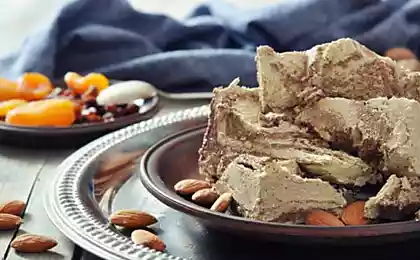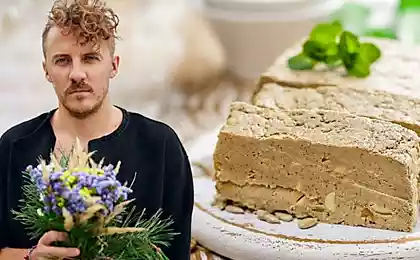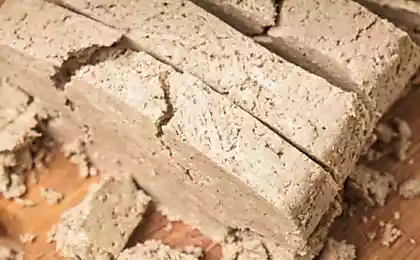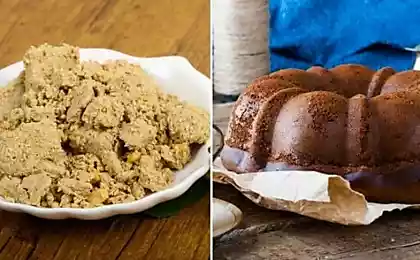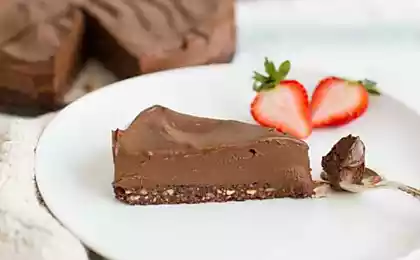119
Who can't eat halva
Halva appeared on our tables first, even before lukum, nougat, baklava and other oriental sweets. It became one of the favorite desserts, and now it is difficult to imagine tea without this treat.
Since halva is very sweet, many people used to think that it consists mainly of sugar, and therefore does not bring any benefit to the body. We will try to dispel this myth.
At the same time, it can not be eaten by patients with diabetes, pancreatitis and cholecystitis. It is also not recommended to combine the reception of this dessert with other sweets and bakery products, because it is quite full and complete.

DepositPhotos Benefits of Halva
The benefits of halva for the body are undeniable. It is only necessary to eat it in moderation. 30 g per day is enough to nourish your body and enjoy the taste.
The benefits of halva sunflower, the most common in our region is especially noticeable for the female body. Sunflower seeds are rich in biotin, alpha-tocopherol (vitamin E), beta-sitosterol, which are necessary for a woman’s health.
In this sense, the benefits of their use can be compared with the benefits of using avocados. If you learn all this, you will surely love Halva even more.
If you want to know what other treats you can eat without remorse, read our previous article.
And as a bonus from us is a recipe for homemade halva, which you can prepare yourself to be sure of the quality of its components. Bon appetit.
Since halva is very sweet, many people used to think that it consists mainly of sugar, and therefore does not bring any benefit to the body. We will try to dispel this myth.
At the same time, it can not be eaten by patients with diabetes, pancreatitis and cholecystitis. It is also not recommended to combine the reception of this dessert with other sweets and bakery products, because it is quite full and complete.

DepositPhotos Benefits of Halva
- History of halva Halwa came to us from Iran. There they learned to make it in the fifth century BC. The person who dedicated himself to making this dessert was called a kandalatch.
At that time, our favorite sunflower halva did not yet exist. The birthplace of the sunflower is considered North America. He came to Russia under Peter I. And widely used as an oilseed plant began only in the XIX century.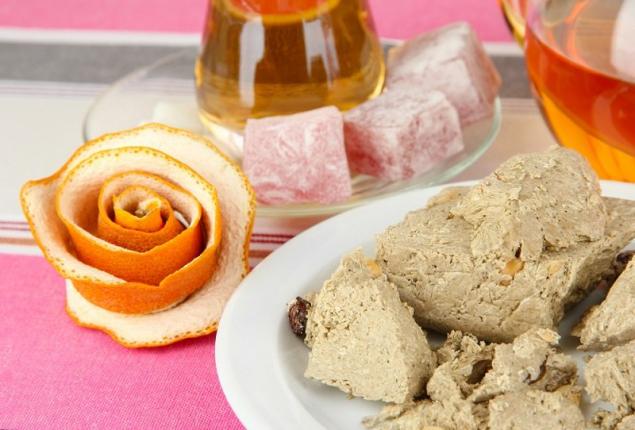
DepositPhotos - Halva species The species of halva can please with its diversity. Now there is tahina halva, which is made from sesame seeds, sunflower, from sunflower seeds, nut halva. The basis for the latter are different types of nuts: peanuts, almonds, pistachios, walnuts, cashews.
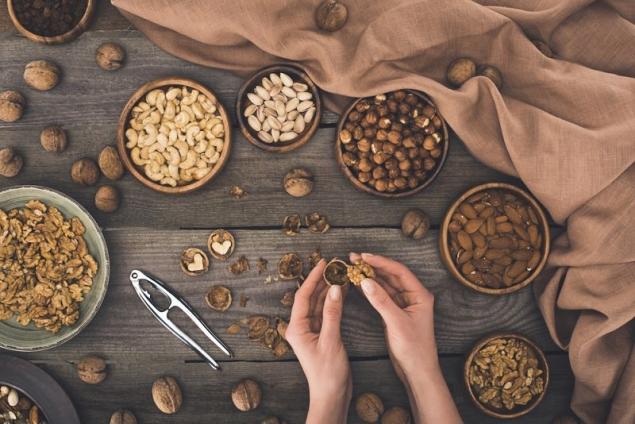
DepositPhotos - Halva composition The three main components of halva are a protein mass obtained from seeds or nuts, a sweetener and a foaming agent.
Sugar, molasses or honey are used as a sweetener. And as a foaming agent - spinal coil root, licorice root, althea root or egg white to choose from. These are natural components, the main function of which is to give halva a layered fiber structure.
Ascorbic acid is used as an antioxidant and lecithin as a natural emulsifier. Also, the composition of halva can include various flavoring additives: vanillin, cocoa, raisins.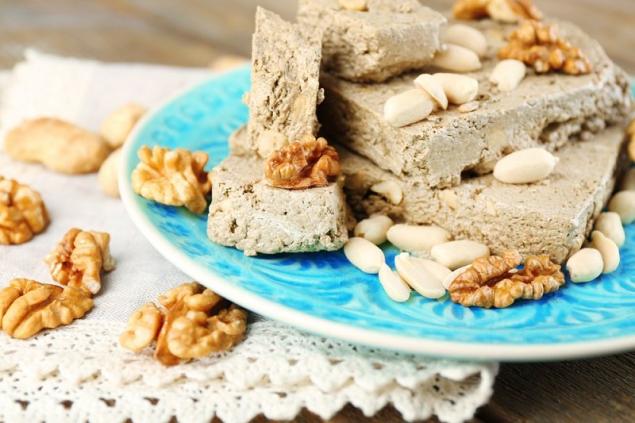
DepositPhotos - Useful properties and caloric content of halva Protein base turns halva into a very useful dessert. It is rich in riboflavin, niacin, calcium, iron, magnesium, phosphorus, folic acid. And also dietary fiber and maltose.
By the amount of protein content, halva stands on the same level with meat. But if eating meat entails an increase in cholesterol levels in the body, then the use of halva passes without any consequences. This is because it contains only unsaturated fats.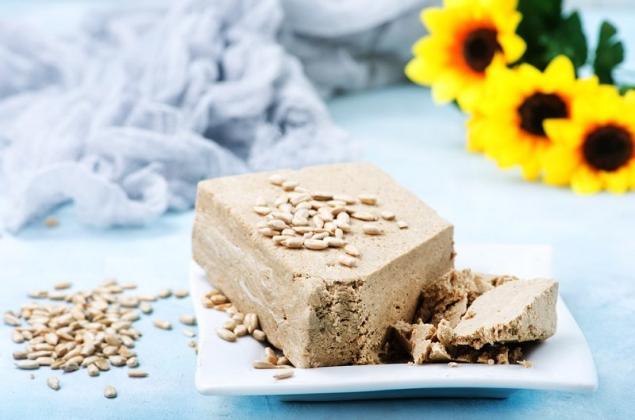
DepositPhotos
The only disadvantage of halva is its high calorie content. 100 g of product contains about 550 kilocalories. The presence of sugar in some types is also confusing. If it is replaced with honey or maple syrup, the benefits of halva will be difficult to underestimate.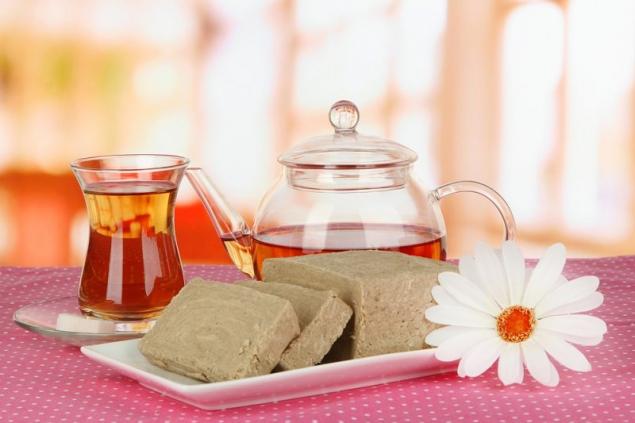
DepositPhotos
The benefits of halva for the body are undeniable. It is only necessary to eat it in moderation. 30 g per day is enough to nourish your body and enjoy the taste.
The benefits of halva sunflower, the most common in our region is especially noticeable for the female body. Sunflower seeds are rich in biotin, alpha-tocopherol (vitamin E), beta-sitosterol, which are necessary for a woman’s health.
In this sense, the benefits of their use can be compared with the benefits of using avocados. If you learn all this, you will surely love Halva even more.
If you want to know what other treats you can eat without remorse, read our previous article.
And as a bonus from us is a recipe for homemade halva, which you can prepare yourself to be sure of the quality of its components. Bon appetit.






